Discover 20 hidden attractions, cool sights, and unusual things to do in Huntington (United States). Don't miss out on these must-see attractions: Heckscher Museum of Art, Vanderbilt Museum, and Centerport. Also, be sure to include Walt Whitman Birthplace State Historic Site in your itinerary.
Below, you can find the list of the most amazing places you should visit in Huntington (New York).
Table of Contents
Heckscher Museum of Art
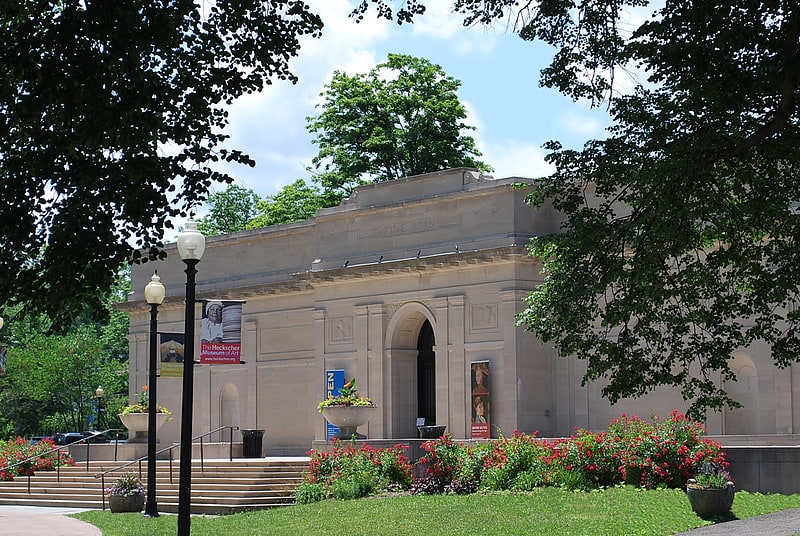
Museum in Huntington, New York. The Heckscher Museum of Art is named after its benefactor, August Heckscher, who in 1920 donated 185 works of art to be housed in a new Beaux-Arts building located in Heckscher Park, in Huntington, New York. Today the museum has over 2000 works of art, focused mainly on American landscape paintings and work by Long Island artists, as well as featuring American and European modernism, and photography. The most famous painting in the collection is George Grosz’s “Eclipse of the Sun”.[1]
Address: 2 Prime Ave, 11743-2771 Huntington
Vanderbilt Museum

Museum in Centerport, New York. The Vanderbilt Museum is located in Centerport on the North Shore of Long Island in Suffolk County, New York, USA. Named for William Vanderbilt II, it is located on his former 43-acre estate, Eagle's Nest.[2]
Address: 180 Little Neck Rd, 11721-1145 Centerport
Centerport
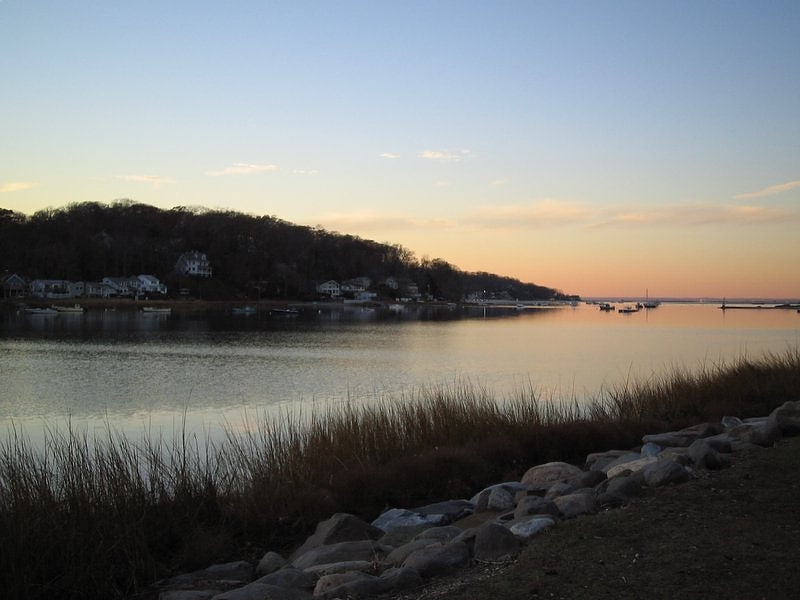
Hamlet in New York State. Centerport is a hamlet and census-designated place in Suffolk County, New York, United States, on the notably affluent North Shore of Long Island, historically known as the Gold Coast. Formerly known as Little Cow Harbor in about 1700, as Centerport in 1836, and as Centerport after 1895, the name refers to its geographic position midway between the east and west boundaries of the town of Huntington.
As of the 2010 United States Census, the CDP population was 5,508. It is located in the town of Huntington. Huntington and its surrounding hamlets mark the east end of Long Island's renowned "Gold Coast", the name deriving from the traditional wealth and gentility associated with the area. The association dates back to the early twentieth century in which many affluent families built their homes along the north shore of the island. In Centerport, an example of this is the estate of William Kissam Vanderbilt II, otherwise known as Eagles Nest.
Centerport is highly residential, characterized by winding driveways and beachfront hills. As is common among the many beachfront locations on Long Island's North Shore, Centerport has developed a large boating and sailing culture. An important part of this culture is the Centerport Yacht Club, which was founded in 1947 and has served as the social and athletic focal point for the boating community in both Centerport and its surrounding areas. The yacht club sponsors a variety of racing fleets and regattas every year generally beginning in the late spring and ending mid-autumn.
Suydam House, built in 1730, a saltbox house, is one of the oldest surviving houses in Centerport.[3]
Walt Whitman Birthplace State Historic Site
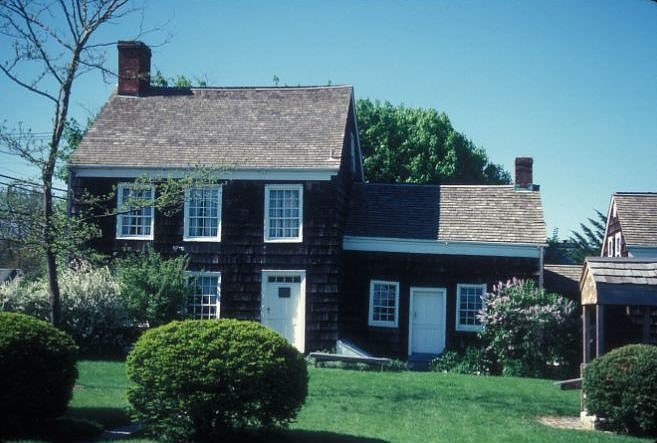
Museum in South Huntington, New York. The Walt Whitman Birthplace State Historic Site is a state historic site in West Hills, New York, listed on the National Register of Historic Places. The site preserves the birthplace of American poet Walt Whitman.[4]
Address: 246 Old Walt Whitman Rd, 11746-4148 Huntington Station
Jayne's Hill

Jayne's Hill is the highest point on Long Island, New York, with an elevation of between 387 feet and 400.9 feet above sea level. It is situated on the Harbor Hill moraine, a terminal moraine that makes up the northern spine of Long Island. in West Hills County Park in Suffolk County, a little more than a mile to the north of Melville.[5]
Mill Dam Bridge

Bridge. The Mill Dam Bridge carries Mill Dam Road across the tidal mudflat of Centerport Harbor on the North Shore of Long Island, in Centerport, Suffolk County, New York. It divides the navigable waters of the harbor from the Mill Pond formed by its tidegates.
The original Mill Dam and tide mill were built in 1674 at a site south of the present location. The bridge at the current location was first constructed in 1774 by Sylvanus Townsend. The mill was dismantled in 1915, and parts of it were used to construct the nearby William Kissam Vanderbilt II estate, which is now the Vanderbilt Museum. The current Mill Dam Bridge prestressed concrete center span and tidegates built in 2005 replaced the span from 1936. The replacement project won the 2005 American Council of Engineering Companies (ACEC) Long Island Project of the Year Award.
The bridge was closed to traffic in October 2007, due to deterioration of the old causeway connecting the new span to the shore. In February 2008, workers making repairs to the causeway unearthed a 3000 pound (1400 kilogram) gear, believed to have been installed at the tide mill during an 1848 overhaul. It reopened to traffic on June 27, 2008.[6]
Caumsett State Historic Park Preserve
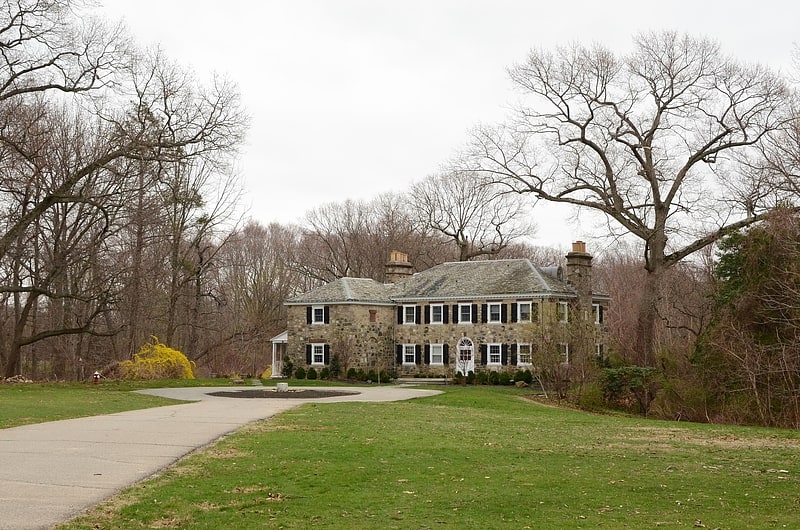
State park in Lloyd Harbor, New York. Caumsett State Historic Park Preserve is a state park on Lloyd Neck, a peninsula extending into the Long Island Sound, in the Village of Lloyd Harbor, New York. It is operated by the New York State Office of Parks, Recreation and Historic Preservation.
The 1,520-acre (6.2 km2) park covers the former Marshall Field III estate that was developed in the 1920s, and was listed on the National Register of Historic Places in 1979. Much of the park is today managed as a nature preserve, with a focus on protecting high-quality bird habitat.[7]
Address: 25 Lloyd Harbor Rd, Huntington
The Whaling Museum & Education Center
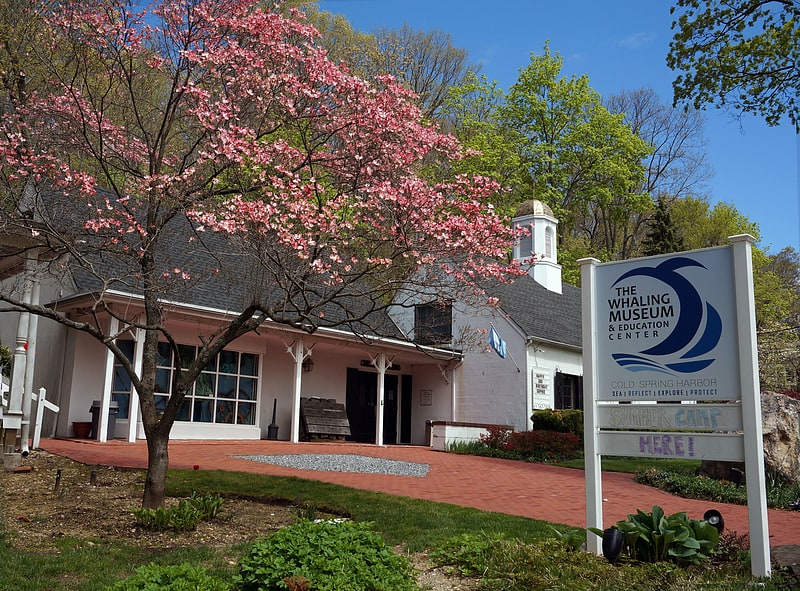
The Whaling Museum & Education Center, formerly known as The Whaling Museum, is a maritime museum located in Cold Spring Harbor, New York dedicated to exploring the local history and impact of the whaling industry, the maritime heritage of Long Island, and the relationship between people and the ocean.
The mission is to explore the ever-changing relationship between humans and whales through inquiry-based education and interpretation of artifacts that emphasize the cultural, scientific and environmental significance of Long Island and the Sea. We help members and visitors make informed decisions about our marine environment. The Museum serves 20,000 visitors annually and is accredited by the American Alliance of Museums. Located in a historic 19th century waterside village on the North Shore of Suffolk County, the Whaling Museum Society was founded in 1936, with the Museum opening its front doors in 1942. Current exhibit space is 2500 square feet, which includes an educational workshop. The Museum is the only facility in New York State open year-round which focuses on the prominent whaling history of the region and its meaningful applications in today's world.
The museum holds about 6,000 documents and artifacts from Cold Spring Harbor and other Long Island whaling towns. Highlights of the collection include New York State’s only fully equipped 19th-century whaleboat with original gear and one of the most notable scrimshaw collections in the northeast.
Additional displays include whaling implements, ship’s gear, navigational aids, ship models and maritime art. The library and archival collection contains 2,800 primary and secondary volumes and manuscript material from the Cold Spring whaling fleet, ship’s logs, journals and business correspondence of the Cold Spring Whaling Company, family documents dealing with maritime commerce on Long Island, records of the Long Island coastwise trade under sail and records from the Cold Spring Harbor Customs House (1798 until 1908).
The museum hosts educational events and exhibitions year-round, including films, lectures, performances, and special events, many of which creatively connect the subject of whaling to other subjects in art, science, and culture. The museum's education department runs an extensive "Museum to You" program, as well as camp weeks during school breaks.[8]
Address: 301 Main St, 11724 Cold Spring Harbor
Coindre Hall
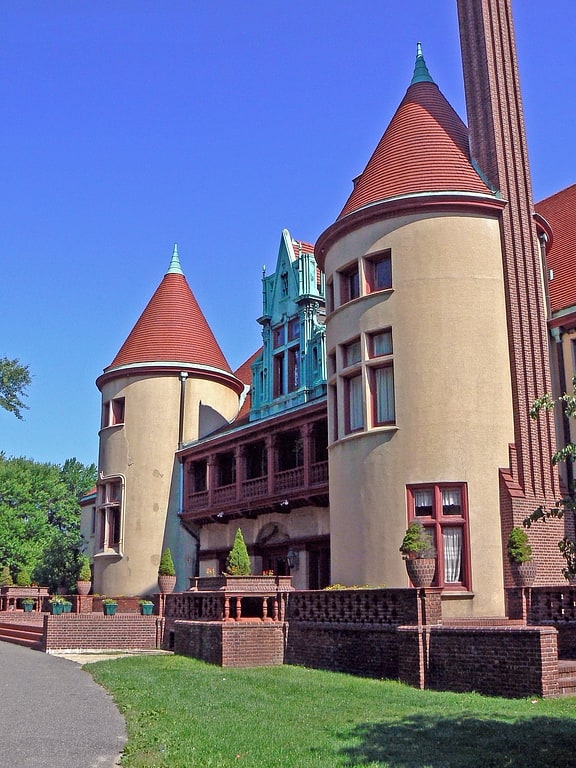
Mansion. Coindre Hall, originally called West Neck Farm, is a 40-room, 80,000-square-foot mansion in the style of a medieval French château constructed in 1912 for pharmaceutical magnate George McKesson Brown.[9]
Address: Browns Road, 11743 Huntington Station
Coneys Marine
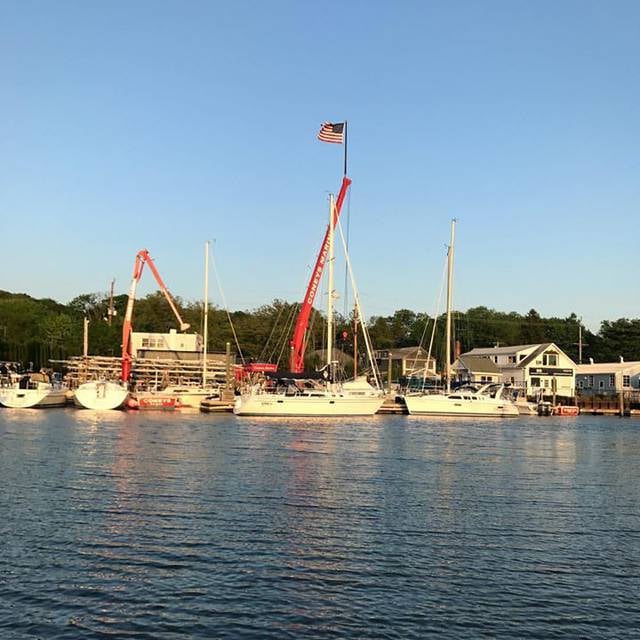
Sailing, Marina
Address: 32 New York Ave, Huntington
Suydam House
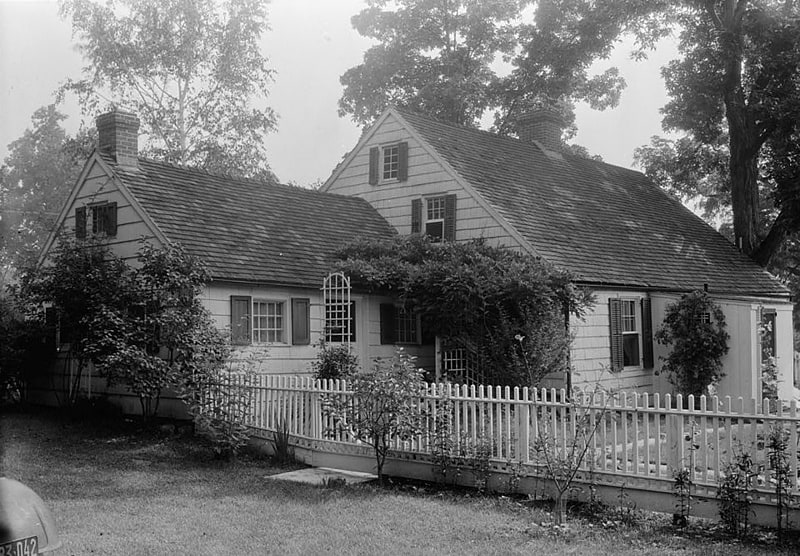
Museum in Centerport. Suydam House is a historic home in Centerport in Suffolk County, New York. It was built about 1730 and is a rectangular, five-bay, 1+1⁄2-story saltbox type building with a one-story wing. It features a steeply pitched, asymmetrical gable roof, pierced by a brick chimney.
The house is on Suffolk County Parkland on the southeast corner of Suffolk County Road 86 and New York State Route 25A, across from the southern terminus of Little Neck Road. It was added to the National Register of Historic Places in 1988.
The Greenlawn-Centerport Historical Association has restored the house and operates it as a historic house museum. Of particular note are the unusual windows, both six panes over three, and four panes over two.
Its NRHP nomination from 1988 asserts:
The Suydam house is architecturally and historically significant as a distinguished, largely extant example of settlement period domestic architecture on Long Island that recalls the early growth of the town of Huntington. Built circa 1730, this New England style saltbox (with eighteenth century wing) is one of the oldest remaining houses in the village of Centerport. It is similar in plan, construction and design to many settlement period dwellings in Huntington (Town) such as the John Wood House (circa 1704) and the Ireland-Gardiner Farm (circa 1750). Like these and other seventeenth and eighteenth century dwellings in the Huntington (Town) Multiple Resource area, the building exhibits characteristic architectural features of early construction practices on Long Island, including heavy hewn timber framing, original wrought-iron hardware, and an overall lack of decorative ornamentation.[10]
David Conklin House
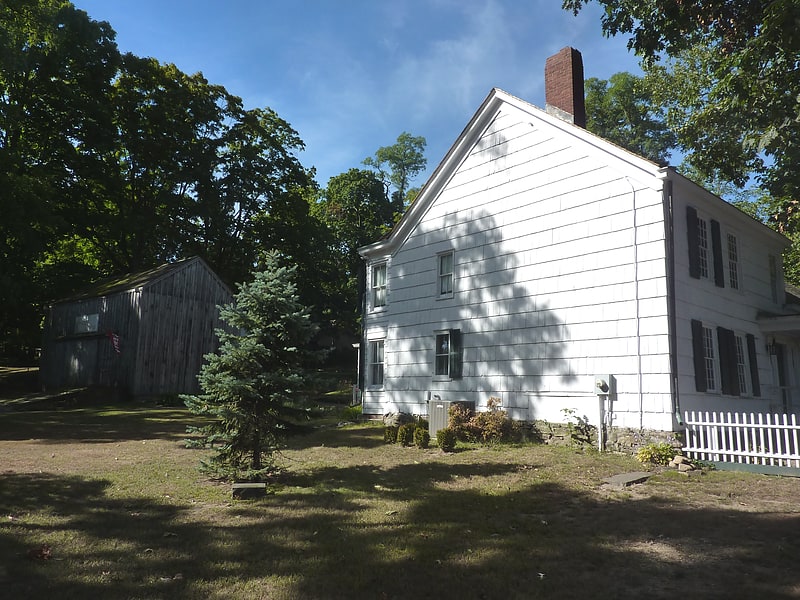
The David Conklin House is a historic house located at Huntington in Suffolk County, New York, on the southwest corner of High Street and New York Avenue.[11]
Fort Golgotha and the Old Burial Hill Cemetery
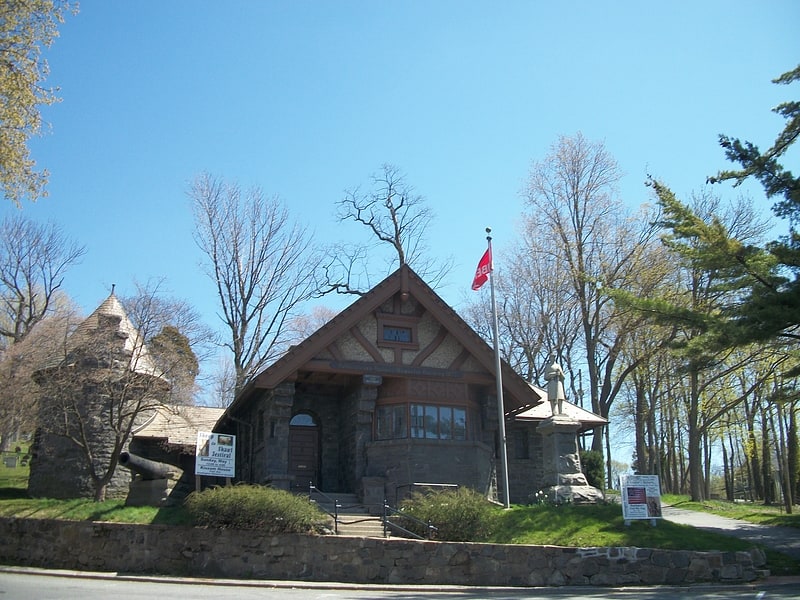
Cemetery in Huntington, New York. Fort Golgotha and the Old Burial Hill Cemetery is the site of an historic cemetery, officially known as the "Old Burying Ground", and the location of a former Revolutionary War-era fort, known as Fort Golgotha, at Main Street and Nassau Road in Huntington, New York. It is located in the Old Town Green Historic District and Old Town Hall Historic District.
The fort, which takes its name from Golgotha, was built by British troops in 1782 on orders of Colonel Thompson, commander of the King's American Dragoons, on the site of the town burial ground. The nearby Presbyterian Church was dismantled, and its timbers used in the fort's construction. The fort was one, of a network, of British fortifications, in and around Huntington. East of town there was a larger fortification, on the site later, known as Gallows Hill, now known as "Fort Hill", Fort Slongo (now known as Fort Salonga) even further to the east, and Fort Franklin to the north on Lloyd Neck. After the British troops withdrew in 1783, the fort was dismantled, the burial grounds restored and the Presbyterian Church rebuilt. The site was added to the National Register of Historic Places in 1981.[12]
Britannia Yachting Center

Sailing, Marina
Address: 81 W Fort Salonga Rd, Huntington
Willis Marine Center
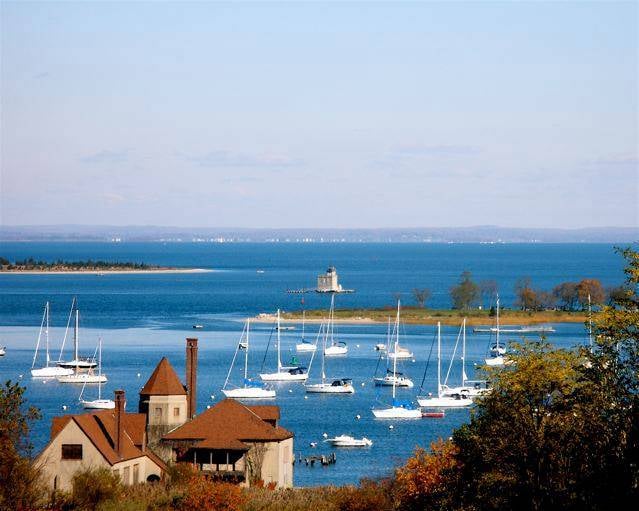
Sailing, Marina
Address: 17 Mill Dam Rd, Huntington
Heckscher Park

Park in Huntington, New York. Heckscher Park is a local park and national historic district in Huntington, Suffolk County, New York. It is bounded by Madison Street, Sabbath Day Path, Main Street, and Prime Avenue. The park is roughly triangular-shaped with a large pond on northwest corner, and contains the Heckscher Museum of Art established by industrialist August Heckscher, as well as the Chapin Rainbow Theater. It hosts annual art festivals, tulip festivals, concerts, renaissance fairs, and the Huntington Summer Arts Festival. Heckscher Park was listed on the National Register of Historic Places in 1985.[13]
Old First Church
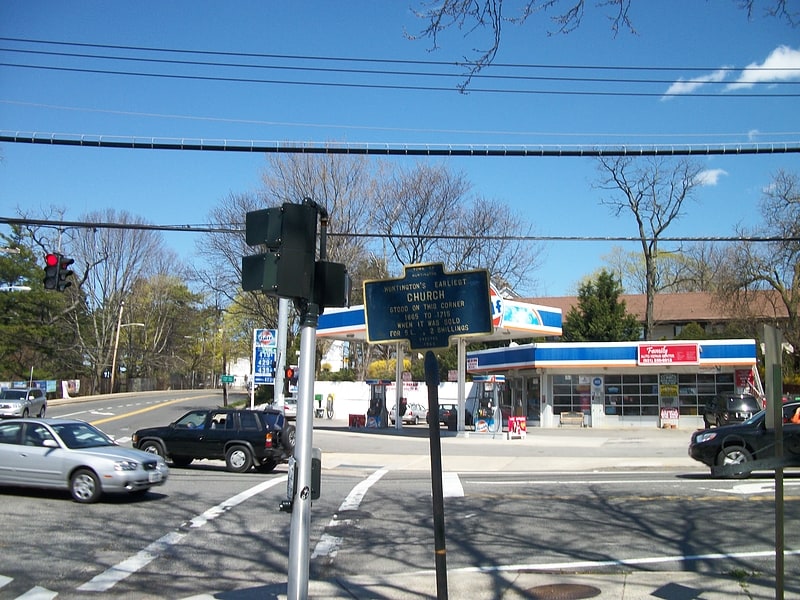
Church building in Huntington, New York. Old First Church is an historic Presbyterian church building at 125 Main Street in Huntington, Suffolk County, New York. It was built in 1784 and is a two and one-half-story building with a steeply pitched gable roof. About 1900, a two-story, five-gable-roofed addition was completed on the rear of the building. It features a tall, square, five-story bell tower that dominates the center of the main facade.
The church is actually the third church of the same name to stand in the area. The original was built in 1665, soon after the town's founding at what was the southwest corner of NY 25A and Spring Street. The first church was demolished when its size proved inadequate, even after expansion, and the second church erected in its present location in 1715. The second church was destroyed in 1782 for use in construction of fortifications by British troops occupying Huntington. The current church was rebuilt in the same location in 1784.
It was added to the National Register of Historic Places in 1985.[14]
Cold Spring Harbor Fish Hatchery and Aquarium
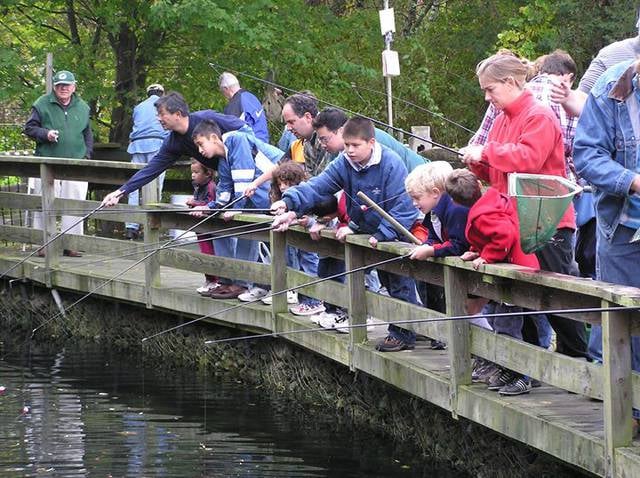
Aquarium in Laurel Hollow, New York. The Cold Spring Harbor Fish Hatchery & Aquarium is a non-profit environmental education center dedicated to educating its visitors about the freshwater ecosystems of New York State. It was founded in 1883 in Cold Spring Harbor, New York as a state trout hatchery, and served in that capacity until 1982, when it was reopened as a non-profit educational center by the Friends of the Cold Spring Harbor Fish Hatchery, Inc. Facilities include two aquarium buildings that feature New York State freshwater reptiles, fish and amphibians, and eight outdoor ponds with trout in various stages of development, as well as some with local fish. Catch and keep trout fishing is available year-round.
Cold Spring Harbor Fish Hatchery and Aquarium offers environmental education programs for schools and groups and summer camp programs.[15]
The Head of the Bay Club
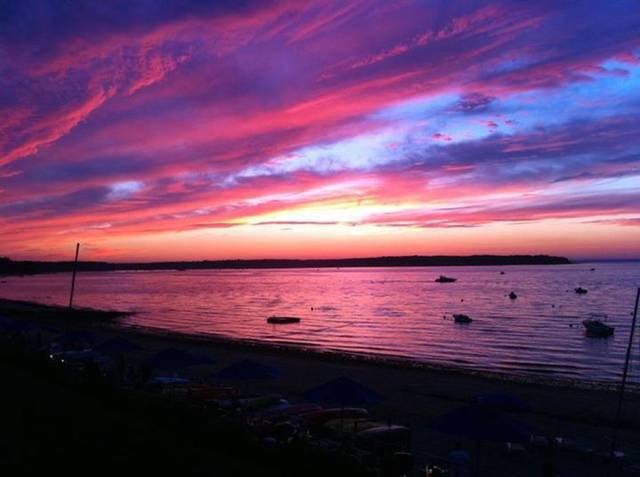
Sailing, Beach, Marina
Address: 191 Bay Rd, 11743 Halesite
Bethel AME Church and Manse
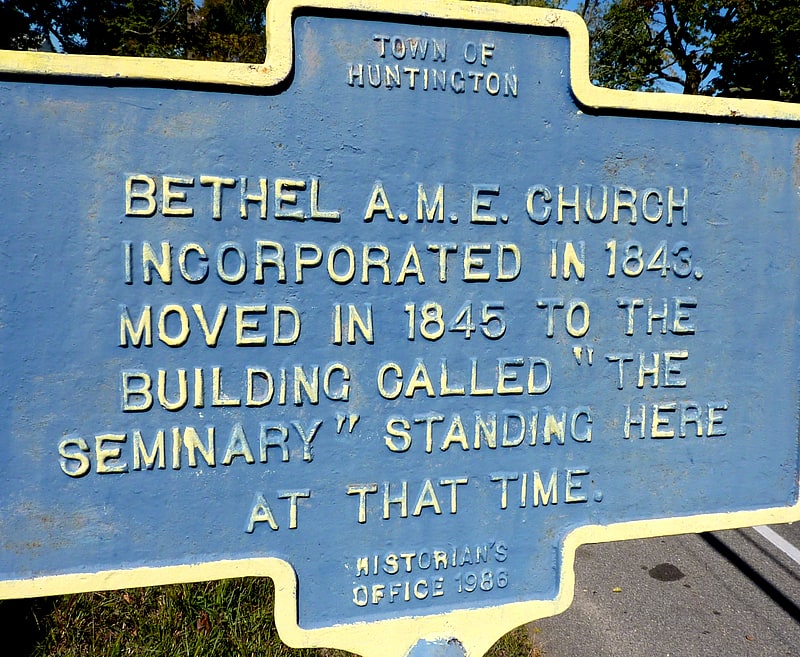
Bethel AME Church and Manse is a historic African Methodist Episcopal church and manse at 291 Park Avenue in Huntington, Suffolk County, New York. The church was built about 1845 and is a 1+1⁄2-story, wood-frame structure that is rectangular in plan with a gable roof and clapboard exterior. The manse was built in 1915 and is a 2-story, wood-frame structure, with a two-by-two-bay square plan.
It was added to the National Register of Historic Places in 1985.[16]